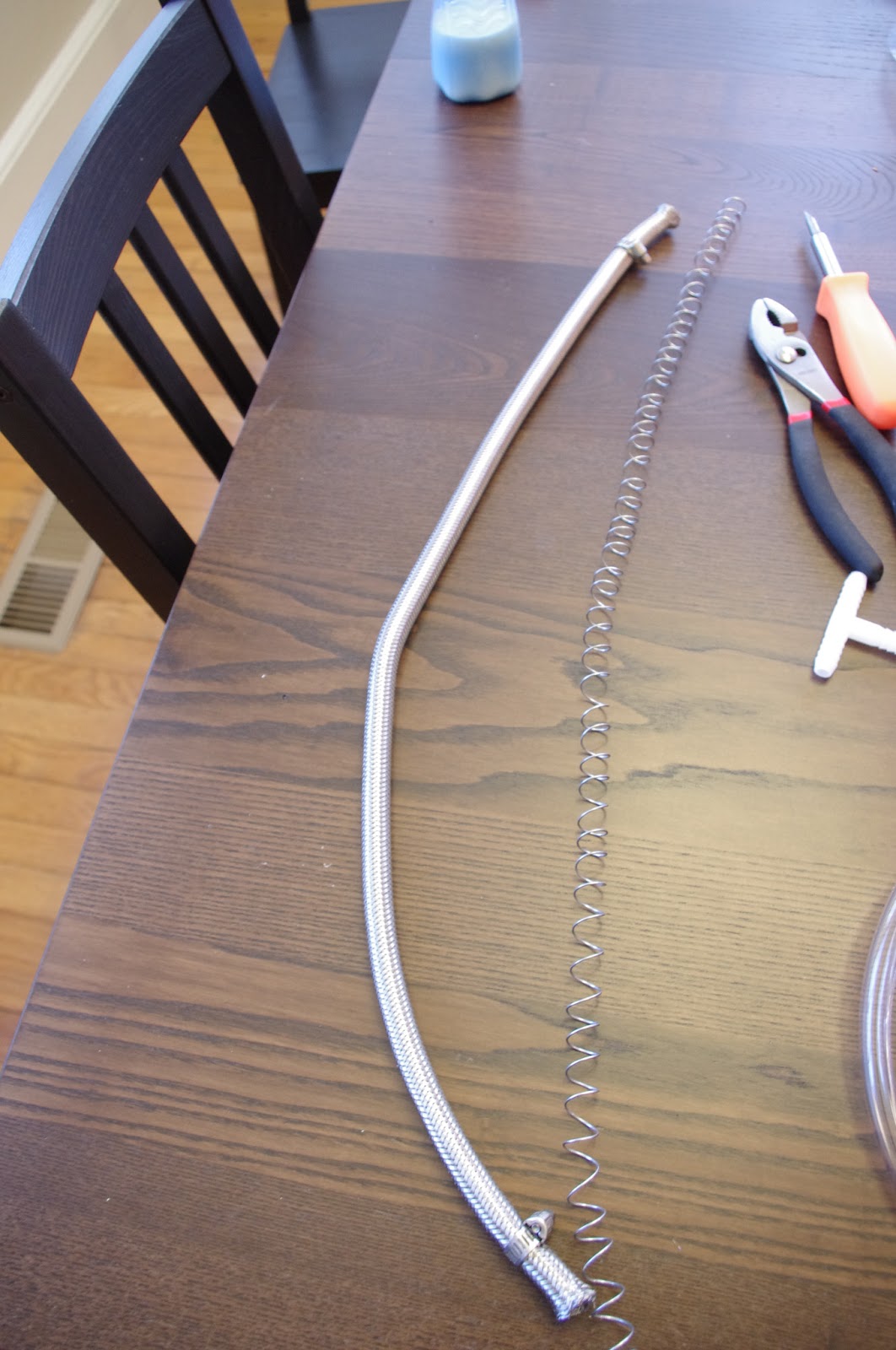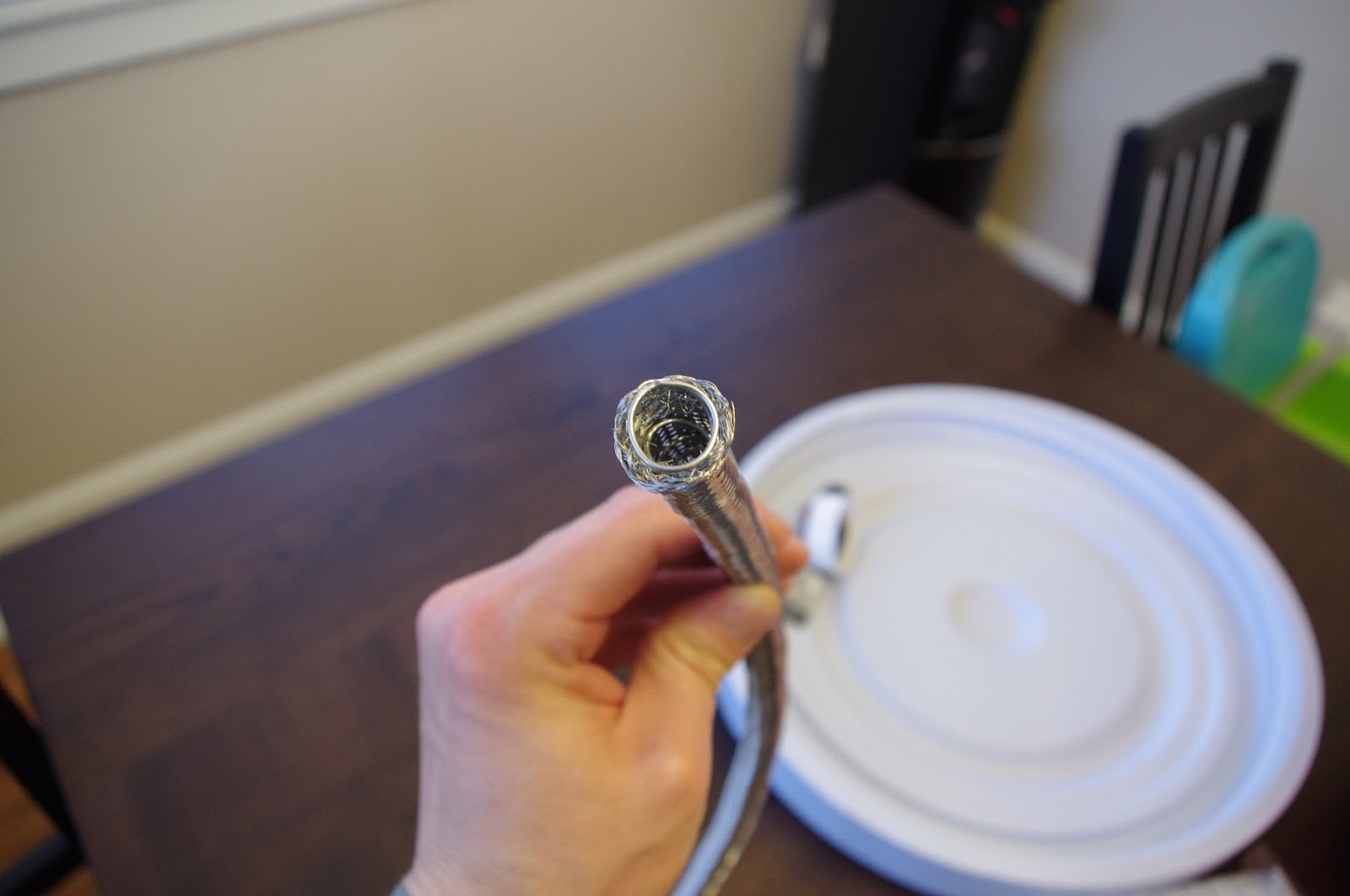Materials:
A) 10 gallon Rubbermaid water cooler. ~$50. The cooler pictured is the "Home Depot" brand. Notice that the tap has been removed and the rubber grommet is still in tact.
B) Teflon tape ~$2
C) Framing wire. ~$3 Galvanized steel. Used to add inner support to the mesh tube. Can be dirty with grime from manufacturing process. Wash with soap and hot water.
D) Extra rubber washers, assortment. ~$3
E) 3/8" FIP x 1/4" FIP connector (x2) ~$5 each
F) 1/2" washer (x5) ~$0.35 each
G) 3/8" MIP "close" (x1 or 2) ~$5 each
H) 1/4" MIP "close" (x1) ~$5
I) 3/8" MIP 1 1/2" (x1 or zero) ~$5 each *buy one G and one I or two Gs or two Is.
J) 3/8" FIP (both ends) valve + 3/8" MIP threaded hose barb (x2) ~$8 for valve, ~$5 for barbs.
K) Bathroom sink hose, stainless steel mesh coated ~$15
L) "T" vinyl hose barb ~$3
other L) Hose ~$8
Steps:
1)Wind the framing wire around a pen or marker, then gently feed it through the steel mesh that you removed from the sink hose. Did I mention to remove the mesh from the sink hose? Yeah, do that too.
2) Wrap threads with the teflon tape and assemble them to create the valve structure, inside and out.
That picture is blurry, sorry, but from left to right it is: hose, hose barb screwed into valve, 3/8" FIP x 1/4" FIP connector screwed into the valve, 1/4" MIP nipple. Gap. 3/8" FIP x 1/4" FIP connector, 3/8" MIP nipple, 3/8" FIP hose barb, hose.
You may be asking, "Jim, why use the 1/4" MIP nipple and connectors and not just run the 3/8" nipple straight from the valve to the hose barb?" The answer is, the 3/8" MIP nipple is to big to run through the rubber grommet and washers. Thus, I had to down step the pipe that passed through the hole on the cooler.
3) Screw the two pieces together. Use washers to add strength and water-tight integrity on both sides of the hole. Look closely at the left picture to see how many washers I had to use to seal the gaps.
4) Attach the mesh manifold. If you look closely you will see that I did not clamp the hose down between the brass and nylon hose barbs. I did that for cleaning purposes.
Now that the mash tun is complete, let's try it out.
1) Add grains.
2) Hot water.
3) Drain. If you look under the valve you can see that the seal is not perfect. But with ~6 gallons of very hot water inside for that long, this is an acceptable loss.
Mission complete!
Stop back later to see how this beer turns out.















